 Memories of past wars. Vietnam: Family fleeing from
Americans attacking their village.
Memories of past wars. Vietnam: Family fleeing from
Americans attacking their village.
Does Iran have the bomb already?
Are you shutting the barn door after the horse has bolted, President Bush?
Press airplane for further information.
 June 21, 2007 10:51 AM Elizabeth Sprague Reports:
June 21, 2007 10:51 AM Elizabeth Sprague Reports:  A satellite photograph obtained by ABC News reveals Pakistan is nearing completion of a third, previously unknown plutonium production reactor, suggesting Pakistan may be planning to expand its nuclear weapons arsenal.
A satellite photograph obtained by ABC News reveals Pakistan is nearing completion of a third, previously unknown plutonium production reactor, suggesting Pakistan may be planning to expand its nuclear weapons arsenal.
"With large stocks of plutonium, Pakistan can build a new generation of lighter, more powerful weapons that can more easily be launched via missiles and can cause far more damage," said David Albright, the president of the Institute for Science and
International Security (ISIS), which, along with DigitalGlobe, provided the satellite image to ABC News.
The image, taken on June 3, indicates the new reactor is a replica of a second heavy water reactor, also under construction, at Khushab, approximately 109 miles south of Islamabad, Pakistan's capital.
The third reactor is located a few hundred meters to the north of the second. The original reactor at the site began operations in 1998.
According to Albright, construction of the third reactor has been especially rapid. In the GeoEye image from August 2006, only minimal ground excavation is visible.
The Pakistani Embassy had no immediate comment.
Pakistan's facilities at Khushab are not subject to safeguard inspections by the International Atomic Energy Agency (IAEA).
The existing reactor at Khushab is known to produce plutonium for Pakistan's nuclear weapons program.
Pakistan has not signed the nuclear Nonproliferation Treaty (NPT). It is one of only three states to opt out of the international treaty designed to promote cooperation in achieving nuclear disarmament and peaceful uses of nuclear energy. India and Israel are the other two.
Experts estimate Pakistan has already built about 60 nuclear weapons.
Until more is known about the power of these two new reactors, Albright says, it is difficult to estimate the number of weapons that could be built from plutonium harvested from the reactors' spent fuel.
With that caveat, he notes, the number of produced weapons could easily reach at least 10 each year.
 |
| Satellite photo of secret Iranian nuclear installation at Natanz |
On October 25, 2002, DEBKA-Net-Weekly reported in its No. 82 issue the suspicion in Washington that one of the two bombs allegedly hidden in Kim Jong II’s war chest was not North Korean at all, but Iranian. Our sources revealed that the Iranian bomb was delivered to North Korea in the third week of September under a secret agreement Kim-Jung Nan, the North Korean president’s overseer of his country’s military and nuclear relations, concluded in Tehran on July 24. (To subcribe to DNW, click HERE ).
Last week, DEBKA-Net-Weekly received fresh and surprising information on how this deal is being implemented. The information came from intelligence sources who checked out a detailed report on Iran’s clandestine nuclear program brought to Washington in early August by an Iranian exile in flight from the hard-line regime. That report found no willing listeners in the US government, which was busy at the time with its bid to rope Iran into the war against Iraq.
On August 14, the exile called a select news conference and presented his report again. He still failed to attract serious official attention – until the North Koreans admitted to a secret nuclear program. Then, the powers that be in Washington began connecting nuclear dots. Intelligence agencies went to work and established that the Iranian exile’s report, gathering dust for three months, was spot on target, accurate in every detail.
That report reveals that the two bombs smuggled to North Korea from Iran last September were the property of North Korea. However, they were manufactured and assembled in Iran under the secret Tehran-Pyongyang contract of last July.
This means that North Korea secretly transferred its nuclear manufacturing facilities to the Islamic Republic. Specifically, North Korean plant for the production of all the essential components of the North Korean bombs, including equipment for uranium enrichment, was shifted lock, stock and barrel to Iran, where production has been taking place at two secret sites, both supervised by the Iranian Atomic Energy Organization. This state body is controlled by the National Security Council that defers only to Iran’s radical spiritual leader Ali Khamenei.
The most important site, where nuclear fuel (enriched uranium) is produced, is located at Natanz, 100 miles north of Isfahan on the old Natanz-Kashan highway. A huge facility, big enough to employ hundreds of workers, it is buried many feet underground and set in layers of concrete. The director of this site is an IAEO official called Dawood Agha-Jani.
The second site, producing heavy water, is at Arak in a place called Qatran Workshop close to the Qara-Chai River, three miles from Khondab in northern Azerbaijan. A second IAEO official, Daryoush Sheibani, heads this project.
Unfinished structures were left at both locations to support official claims that building is uncompleted and the sites still inactive
The Iranian exile’s report, as relayed to DEBKA-Net-Weekly , stressed that Iranian nuclear scientists and technicians were actively employed in every stage of production, their participation in the project in its entirety the essence of the secret Iranian-North Korean nuclear cooperation pact.
Intelligence experts are still pondering the following missing information:
--- After the two bombs were completed, did North Korea leave its nuclear equipment and manufacturing facilities behind in Iran?
Our sources suggest it did - which means Iran is now equipped to manufacture bombs unaided, whether by Russia or anyone else - depending, of course, on the Iranian scientists having acquired the necessary proficiency to work independently.
--- How much uranium was enriched? And what proportion, if any, stayed in Iran?
The presumption is that Iran was left with enough to make between 8-12 bombs.
DEBKA-Net-Weekly’s Washington sources add that the Bush administration is considering placing this information before Russian president Vladimir Putin as leverage to persuade him to come aboard, should the US decide on military action against Iran, during or after the Iraq campaign.
After all, it would now appear that the Iranians used the Russian-assisted Bushehr project as a cover-up for their secret deal with North Korea, camouflage to obscure their progress towards a nuke of their own.
It seems the Iranians may have nuclear capabilities already. That means it would be very dangerous for the U.S. to invade Iran.

Bushehr Satellite Photo [Src: Space Imaging]
*
http://images.google.ca/imgres?imgurl=http://www.npp.hu/mukodes/kepek/navegre-e.jpg&imgrefurl=http://www.npp.hu/mukodes/tipusok/tipusok-e.htm&h=343&w=470&sz=42&tbnid=IYBKXYlJeByZiM:&tbnh=94&tbnw=129&prev=/images%3Fq%3Dnuclear%2Bpower%2Bplant%2Bphoto%26um%3D1&start=3&ei=vFf8RteYFozCgwOw67iKDg&sig2=8u7_eSzeBu8a4JbpS8-ziw&sa=X&oi=images&ct=image&cd=3The great difference between a conventional and a nuclear power plant is how heat is produced. In a fossile plant, oil, gas or coal is fired in the boiler, which means that the chemical energy of the fuel is converted into heat. In a nuclear power plant, however, energy that comes from fission reactions is utilized.
At a time when Iraq and the war on terrorism tend to dominate the debate on international affairs, the possibility of an attack on Iran's nuclear facilities has not been a major topic of discussion in the United States. There are reports, however, that the Bush administration has seriously considered this option but opted to put it on the back burner for the time being.[1][2] If a similar resolution passes the Senate, it will give President Bush or any future administration the ability to launch a preemptive strike on Iran's nuclear facilities whenever this is deemed necessary. Further, on May 6, 2004, the U.S. House of Representatives passed Resolution 398 in a 376-3 vote, calling on the U.S. government "to use all appropriate means to deter, dissuade, and prevent Iran from acquiring nuclear weapons."
In Israel, planning and rhetoric appear to have progressed quite a bit further[3]; it appears that some in Israel are seriously considering a preemptive attack similar to the June 1981 attack on Osirak that destroyed Iraq's nuclear reactor.[4] Meir Dagan, the Chief of Mossad, told parliament members in his inaugural appearance before the Israeli Knesset Foreign Affairs and Defense Committee that Iran was close to the "point of no return" and that the specter of Iranian possession of nuclear weapons was the greatest threat to Israel since its inception.[5] On November 11, 2003, Israeli Foreign Minister Silvan Shalom said that Israel had "no plans to attack nuclear facilities in Iran."[6] Less than two weeks later however, during a visit to the United States, Israel's Defense Minister Shaul Mofaz stated that "under no circumstances would Israel be able to tolerate nuclear weapons in Iranian possession"[7] and just six weeks earlier, Mossad had revealed plans for preemptive attacks by F-16 bombers on Iranian nuclear sites.[8]
This report will examine the following: The Iranian nuclear facilities most likely to be targeted and their proliferation risk potential; the likely preemptive scenarios involving Israel or the United States; and the possible consequences of any preemptive action.The United States (in its infinite wisdom and from its high moral ground) condemns Iran for developing nuclear capabilities and for its failure to live up to the United Nations Declaration of Human Rights. The U.S. A. even wants to go to war with Iran (which would not be a pushover by any means.) This would mean hundreds of thousands or possibly millions of deaths in Iran, but most certainly also in Israel and even in Europe. Iran already has advance missiles that could reach Western Europe. Some would be stopped but others would get through.
*
Immediate Iranian Retaliatory Missile Attacks and Countermeasures
Open source information suggests that currently Iran possesses more than 500 Shehab ballistic missiles. Most of these missiles are Shehab-1 and -2, with a 300- to 500-kilometer (km) range and a 700- to 985-kilogram (kg) payload.[37] With these missiles, Iran is capable of reaching U.S. bases in Oman, Qatar, Kuwait, and Iraq. Iran is also believed to possess 25 to100 Shehab-3 ballistic missiles, displayed in a military parade marking the anniversary of the Iran-Iraq war on September 22, 2003.[38] The Shehab-3 has a 1,300km range, a 700kg payload, and is capable of reaching Israeli cities and bases (See: Chart 1). Iran could launch dozens of these ballistic missiles in the direction of Israel; and U.S. targets in the region, over a long period, depending on the size of the Iranian arsenal, the desired severity of the counterattack, and the ability of U.S. forces to find and destroy their missile launchers.
On the one hand, the destructive potential of these ballistic missile systems should not be underestimated. Although these Scud variants are relatively inaccurate - they are certainly incapable of the pinpoint accuracy associated with U.S. cruise missiles and guided munitions - they do have much greater accuracy and higher payloads than the Iraqi al-Husseins that turned out a mediocre CEP (circular error probability) of 1 to 3km in 1991.[39] Multiple missiles attacks on U.S. or Israeli targets carrying large warheads can potentially be very deadly.
Heavy Bombing unlikely to knock out
Iranian Underground Facilities.
*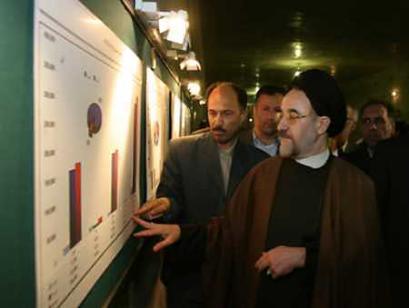 Iranian President Mohammad Khatami looks at a graphics display during his visit to the uranium enrichment facility in Natanz, Iran March 30, 2005. Khatami took a group of journalists deep underground on Wednesday into the heart of the nuclear plant which Washington wants dismantled and whose existence was kept secret until 2002.[Reuters
The balding man with mustache is an undercover agent and may be seen around Powell St and Main Vancouver. As a cover he blogs on supposed anti- Arab blog-sites.
*
Iranian President Mohammad Khatami looks at a graphics display during his visit to the uranium enrichment facility in Natanz, Iran March 30, 2005. Khatami took a group of journalists deep underground on Wednesday into the heart of the nuclear plant which Washington wants dismantled and whose existence was kept secret until 2002.[Reuters
The balding man with mustache is an undercover agent and may be seen around Powell St and Main Vancouver. As a cover he blogs on supposed anti- Arab blog-sites.
*
Monday, September 24, 2007

You might have missed this
article on Iran's 1000 boat "swarm force" stationed near the Strait of Hormuz...:The U.S. Navy has determined that Iran has amassed a fleet of fast patrol boats in the 43-kilometer straits. Iran's Islamic Revolutionary Guard Corps, responsible for strategic programs, leads the effort.

At this point, officials said, IRGC has deployed more than 1,000 FPBs in and around the straits. The vessels, armed with cruise missiles, mines, torpedoes and rocket-propelled grenades, are up to 23 meters in long and can reach a speed of 100 kilometers per hour. ***
"This marks the implementation of Iran's swarm program, where dozens of armed speed boats attack much larger naval vessels from all sides," an official said.
Attacking Iran would not be a Pushover Victory (Ric)
LIFE IN A C.I.A. TORTURE CENTER
http://www.zmag.org/content/showarticle.cfm?ItemID=13050
********************************************************
The U.S. says it is NOT because of oil that it wants to attack Iran, but because it simply wants to make the world more safe and bring freedom and democracy and implementation of Human Rights in Iran.
However this is the exact same story it had about Iraq and to some extent about Afghanistan.
China is a country, which like Iran, commits atrocities against its own people. It disregards human rights of its citizens just as Iran does. It not only has nuclear power for peaceful purposes (as Iran says it wants) but it has a number of nuclear bombs capable of reaching the United States by missile.
So what is the bloody difference? Well China HAS the bomb already and it has NO oil that the U.S.A. wants.
Get this! China is the venue for the Olympic Games!! Is this hypocrisy and double standard?.... Or did I miss something?? Ric

Translated from Chinese" I, Mai Ling plead guilty to inciting fellow students at Beijing University
to place inflammatory propaganda on an internet website, against our great Socialist Nation. I willingly,
without being forced, give up my organs to the state. Goodbye my family. I am sorry to bring shame on you."


And the Olympics,( which are supposed to be about Fair Play in Competition,) are going to be held in this Country???
"The allegation is Falun Gong practitioners are being used for the sale of organs and human tissues ... According to the allegation nobody has so far left this concentration camp," said Manfred Nowak, U.N. special rapporteur on torture and other cruel, inhuman or degrading treatment or punishment.
*http://cipfg.org/en/index.php?news=117
http://www.pekingduck.org/archives/002266.phpCHINA
has the death penalty for 68 crimes including murder, drug trafficking, rape, re-selling VAT receipts, pimping, habitual theft, stealing or dealing in national treasures or cultural relics, publishing pornography, selling counterfeit money, economic offences such as graft, speculation and profiteering and even killing a panda.
During the "Strike hard" campaign against crime in China during the Spring of 2001, Amnesty International recorded a staggering 1,781 executions. This figure is greater than the total number of executions carried out in the rest of the world put together.
China does not publish statistics about the death penalty saying these are a state secret.
Executions are often carried out immediately after a public sentencing rally and the criminal's family is made to pay for the bullet.
The prisoner's arms are shackled behind them and they are made to kneel down before receiving a single bullet fired at close range into the back of the head or neck by a soldier or policeman or by a bullet fired into the heart from behind using an automatic rifle. (Click here for photo)
Chinese laws do not specifically state the site of execution grounds and shootings are carried out at military target ranges and along river banks and on remote hill sides, the prisoners being transported in open lorries from the sports stadiums where they were sentenced.
Condemned criminals are not executed inside prisons because it is regarded as inhumane for other inmates to hear the sound of gunfire.
In a typical mass public execution in December 1995, 13 men and women convicted of murder and highway robbery were shot after the Court dismissed their appeals. Chinese television showed the 9 men and 4 women being paraded at a sports stadium in front of a crowd of more than 10,000 before being taken to the execution ground on a nearby hillside.
Frequently the kidneys, hearts and corneas are removed from the dead prisoners and used in transplants at local hospitals. "Execution is one of the indispensable means of education," China's paramount leader, Deng Xiaoping, once said.
During 1997, China began experimenting with lethal injection and this has steadily replaced shooting.
The Issue “Today, China stands alone in continuing the use of organs of executed prisoners for transplant surgery.”1 International organizations such as the World Medical Association and the World Health Organization regard the sale of human organs as inhumane and unethical. These organizations believe it is essential to address all concerns surrounding illicit organ trade and possibly invoke an international trade mandate to which all nations must adhere. Human rights organizations and numerous former Chinese citizens, like Harry Wu, assert that China uses human organs from executed prisoners to sell for substantial profit. The repercussions resulting from the lack of international laws regulating global human organ trade has caused a worldwide upheaval. Human rights issues encircling the illicit human organ trade as well as the effects of this trade in China and globally should be examined and analyzed.
2. Description
In recent years the rise in demand for organ donation has dramatically increased due to advanced medical technology. The latest technology introduced was a drug helping to control the rejection of the foreign human organ in a patient’s body. This drug, cyclosporine, has revolutionized organ transplantation. It was after the introduction of cyclosporine that China implemented its 1984 rule to allow for organ donation from executed prisoners. Unfortunately, modernization and advancement can facilitate and produce a double-edged phenomenon. The phenomenon related to transplantation is the illicit trade of human organs. The supply of human organs can not meet demands, and as a result, there has been an incredible rise of illegal human organ sales. This section will cover a variety of divergent issues related to human organ trade in China and around the world. I will first discuss the 1984 rule in China regarding human organ donation, and then introduce some of the effects of this ruling.
1984 Rule in China Concerning Organ Donation:
In 1984, China enforced the “Rules Concerning the Utilization of Corpses or Organs for the Corpses of Executed Prisoners.”2 The rule provided “that corpses or organs of executed prisoners could be harvested if no one claimed the body, if the executed prisoner volunteered to have his corpse so used, or if the family consented.”3 China has zero tolerance for crime. The death penalty is obviously legal in China, but what constitutes a crime punishable by death? Amnesty International researcher, Arlette Leduguie, claims that, “criminals are executed for minimal offenses.”4 “In the past years, individuals have been executed for demeanors that would barely justify a custodial sentence elsewhere, pig stealing, or theft, for instance.”5 Amnesty International asserts that the Chinese government is performing executions to expand the organ trade from executed prisoners. According to witnesses in China, criminals are regularly examined to select matches for waiting patients.6 “One prisoner, during his seven year jail term, told how he saw numerous prisoners being medically prepared for organ removal. On the night before the execution, the prison staff would take blood samples.”7
According to David E. Jefferies in his article titled, "The body as a commodity: The use of markets to cure the organ deficit," a Chinese government document explains the procedures used in the extraction of executed prisoners organs generates between 2,000 and 3,000 human organs sold per year out of an estimated 4,500 executed prisoners.8 Amnesty International reports that, “China put more than 1,200 individuals to death in 1999.”9 These figures translate into an average of over forty people per week.10 The explanation for the elevated number of executed prisoners is directly related to the current Chinese Communist Party leaders' decisions to eliminate crime in China. A South China Morning Post article claims that "The executions come after leading law enforcer Luo Gan urged police to strike hard to smash blackness and wipe out evil."11 The rising criminal activity in China is from higher unemployment rates and inflation due to economic development and reform. The Chinese government wants to extinguish crime before it becomes endemic.
“Throughout the 1990s, China executed more people than the rest of the world combined.”12 Human rights organizations like Amnesty International and Human Rights Watch/Asia are outraged by the alleged human organ donation from China’s executed prisoners. In the article titled, Organ Procurement and Judicial Execution in China, the author states: “If criminal trials should be a matter of public record, the Chinese government should promptly comply with a recent formal request by the United Nations Committee Against Torture that it provide precise statistical data concerning the number of persons sentenced to capital punishment and executed in China. The authorities should also annul forthwith all "internal" directives ordering the secrecy of such statistics.”13 The negative repercussions from the reliance on executed prisoners to supply vital organs, exceedingly outweigh the feasible greater good. The greater good is compromised because the issue surrounding organ donation becomes complicated by the high cost obtained from the executed prisoners' valuable organs. The high cost involved has led to executions in China taking place in order to accommodate human organ recipients' needs or desires, not according to the prisoner's family's wishes.


 Last Words: Check my D.N.A. you motherfuckers. I'm not the guy who done it!
http://www.clearwisdom.net/emh/articles/2006/8/3/76302.html
Execution U.S. style
...http://www.ccadp.org/tinydavis.htm
more executions U.S. and South Vietnamese style style:http://www.chris-floyd.com/march/
************************************************************************
Last Words: Check my D.N.A. you motherfuckers. I'm not the guy who done it!
http://www.clearwisdom.net/emh/articles/2006/8/3/76302.html
Execution U.S. style
...http://www.ccadp.org/tinydavis.htm
more executions U.S. and South Vietnamese style style:http://www.chris-floyd.com/march/
************************************************************************
February 1, 1968. South Vietnam police chief Nguyen Ngoc Loan
shoots a young man, whom he suspects to be a Viet Cong soldier.
* Execution, Thai style. The screen was so the shooter would not be burdened by conscience. The same
thing occurs when bombers drop cluster bombs on civilians way below out of sight. No conscience
"You just splat 'em, man! Don't think about it afterwards."
Execution, Thai style. The screen was so the shooter would not be burdened by conscience. The same
thing occurs when bombers drop cluster bombs on civilians way below out of sight. No conscience
"You just splat 'em, man! Don't think about it afterwards."
* Buddhist monk burns himself protesting American atrocities in Vietnam.
Buddhist monk burns himself protesting American atrocities in Vietnam.
American troops drag an enemy soldier back to base for the body count. In this body count ritual civilians even children were included. The number was given to the U.S. press as "enemy dead."







































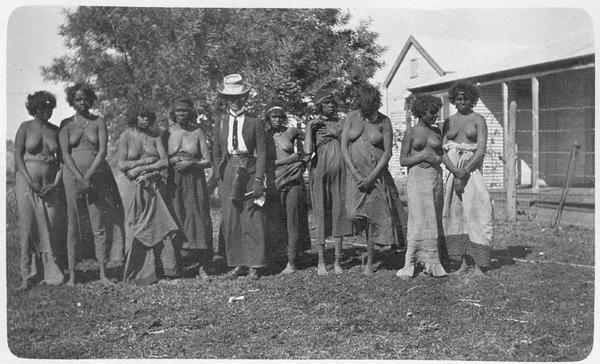






+copy.jpg)
































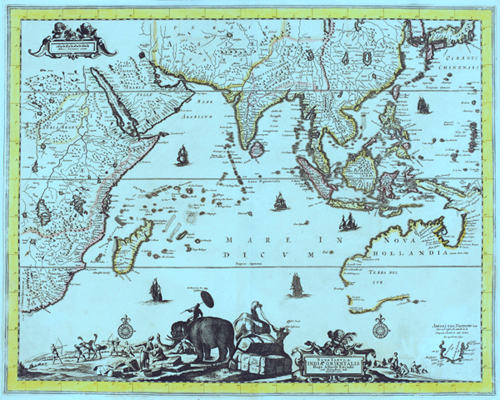





















.jpg)
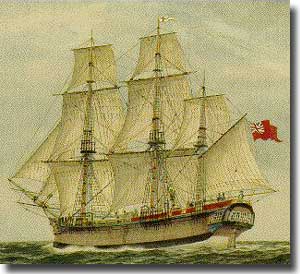

























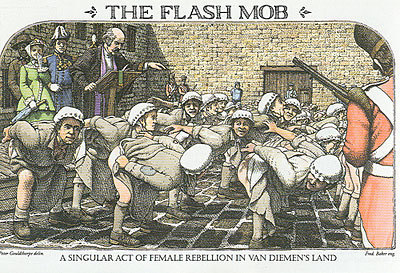
 G
G







.jpg)















